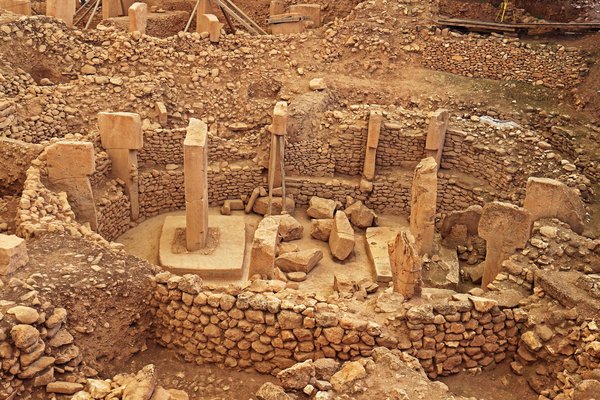Turkiye
Göbekli Tepe
Göbekli Tepe comprises the oldest known monumental megalithic structures in the world.
The archaeological site of a community in transition from hunting-gathering to farming consists of a tell of about 15m in height. From the 10th–9th millennium BCE, circles of massive T-shaped stone pillars were erected here. More than 200 pillars in about 20 circles are currently known through geophysical surveys. The pillars are richly carved with images.
Community Perspective: The site needs proper preparation (watching a few videos or reading some articles mentioned in Solivagant’s review for example) to be understood. The earlier ugly wooden structure covering the remains has now been replaced by a tent that allows some sunlight to come through, and there is a visitor center.
Site Info
Official Information
- Full Name
- Göbekli Tepe (ID: 1572)
- Country
- Turkiye
- Status
-
Inscribed 2018
Site history
History of Göbekli Tepe
- 2018: Advisory Body overruled
- ICOMOS advised to inscribe In Danger simultaneously - overturned by amendment of Brazil and others
- 2018: Inscribed
- Inscribed
- Type
- Cultural
- Criteria
- i
- ii
- iv
Links
- UNESCO
- whc.unesco.org
- Official
-
- muze.gov.tr — Opening hours etc for Göbeklitepe
- Related
-
- haaretz.com — Visiting Göbekli Tepe: The World’s ‘Earliest Temple,’ Built in a Paradise That Is No More
All Links
UNESCO.org
- whc.unesco.org — whc.unesco.org/
Official Website
- muze.gov.tr — Opening hours etc for Göbeklitepe
Related Resources
- haaretz.com — Visiting Göbekli Tepe: The World’s ‘Earliest Temple,’ Built in a Paradise That Is No More
News Article
- Oct. 26, 2025 hurriyetdailynews.com — New excavation area in Göbeklitepe to open to visitors soon
- Feb. 6, 2025 dailysabah.com — Revealing Göbeklitepe: Major upgrades to Türkiye’s ancient wonder
- Oct. 11, 2023 sci.news — 11,000-Year-Old Painted Statue of Wild Boar Unearthed at Gobekli Tepe
- April 18, 2023 dailysabah.com — Göbeklitepe reopens after earthquake closure
- Feb. 11, 2023 al-monitor.com — Prehistoric world heritage site Gobekli Tepe survives Turkey earthquakes
- April 30, 2020 dailysabah.com — Hidden geometric patterns discovered at Turkey’s Göbeklitepe site
- March 10, 2020 hurriyetdailynews.com — Large number of visitors drives conservation focus in Göbeklitepe
- July 16, 2018 hurriyetdailynews.com — New temples, stones found in Turkey’s Göbeklitepe site
- March 21, 2018 hurriyetdailynews.com — Construction around site of Göbeklitepe stirs debate
- Feb. 24, 2018 hurriyetdailynews.com — World’s oldest temple site Göbeklitepe reopens to visitors
- July 1, 2017 advances.sciencemag.org — Modified human crania from Göbekli Tepe provide evidence for a new form of Neolithic skull cult
- May 23, 2017 dailysabah.com — Göbeklitepe prepares for UNESCO with new protective barrier
- July 26, 2015 hurriyetdailynews.com — Signs of world’s first pictograph found in Göbeklitepe
Community Information
- Community Category
- Archaeological site: Near Eastern
Travel Information
One million visitors or more
South Central Turkey Hotspot
Recent Connections
-
Archaeozoology
A "Hunter-Gatherer" ritual feasting sit…
-
Tigris - Euphrates Basin
Euphrates -
One million visitors or more
"With an average of 1 million visitors …
Connections of Göbekli Tepe
- Individual People
-
-
Erich von Däniken
Features in Remnants of the Gods
-
- Geography
-
-
Tigris - Euphrates Basin
Euphrates -
Kurdistan
In Turkish Kurdistan
-
- Trivia
-
-
One million visitors or more
"With an average of 1 million visitors annually, Göbeklitepe is one of Türkiye's most visited archaeological sites." (article Daily Sabah Feb 2025) -
Dubbed as another WHS
Turkish Stonehenge -
Hot Air Balloon rides
-
- History
-
-
Megalithism
an outstanding example of a monumental ensemble of monumental megalithic structures illustrating a significant period of human history (OUV) -
Neolithic age
"Monumental structures, interpreted as monumental communal buildings (enclosures), were erected by groups of hunter-gatherers in the Pre-Pottery Neolithic period" (OUV) -
Oldest Buildings
built by groups of hunter-gatherers in the Pre-Pottery Neolithic period, between 9600 and 8200 BC (AB ev)
-
- Ecology
-
-
Aurochs
A number of depictions of Aurochs have been discovered on the Anthropomorphic T shaped pillars (e.g - "Pillar 66 Enclosure H" and "Pillar 20 Enclosure D). An Aurochs skull with an embedded flint arrow has also been found.
-
- Religion and Belief
-
-
Ancestor Worship
One of the theories about what the pillars represent: ".. the pillar-beings of Göbekli Tepe, best exemplified by the two central pillars in Building D, were probably not depictions of gods. Currently, there is a high degree of consensus that they were instead representations of (mythical?) ancestors. Ancestor veneration is well testified in the PPN koine, for example, in the form of skull cult practices" (Supplementary Information)
-
- Human Activity
-
-
Ongoing Archaeological digs
by the German Archaeological Institute -
Breweries
The discovery of vessels containing the chemical remains of brewing using grain suggests that beer production and drinking was a part of the rituals which took place there. Furthermore that the use of grain for that purpose preceded its use for making bread and stimulated its "domestication" as a crop. See - -
Hunter-gatherers
This property presents monumental round-oval and rectangular megalithic structures erected by hunter-gatherers in the Pre-Pottery Neolithic age between 9,600 and 8,200 BCE. (Official description) -
Erotic art
"pillar 43 in enclosure D includes a headless man with an erect phallus" (wiki)See en.wikipedia.org
-
Pictographs
Many of the pillars are decorated with abstract, enigmatic pictograms and carved animal reliefs. (wiki) -
Masks
Eine Maske mit menschlichen Zügen wurde als Teil eines Totempfahls interpretiert, wie er auch in Nevali Cori gefunden wurde. (wiki de)
-
- Constructions
-
-
Tell
"consists of a natural limestone plateau on which stands an artificial hill (tell)" (AB ev) -
Pillars
Distinctive T-shaped pillars (AB ev) -
Purpose Built Visitor Centre
-
Frontier walls
A Roman era square building was discovered. It could have been a guard tower along the Limes Arabicus. -
Protective Shelters
Main excavated parts are covered by a protective roof
-
- WHS on Other Lists
- Timeline
-
-
Built in the 10th millennium BC
"erected by groups of hunter-gatherers in the Pre-Pottery Neolithic period (10th-9th millennia BC)." (OUV)
-
- WHS Hotspots
-
-
South Central Turkey Hotspot
1.5 hour (mini)bus drive to Sanliurfa (Gobeklitepe is 22km from there)
-
- Science and Technology
-
-
Recorded cultural discoveries
The site was first noted in a survey conducted by Istanbul University and the University of Chicago in 1963 (wiki) -
Archaeological potential
"Only a few buildings have been excavated. They have been designated A to H in order of discovery. The geophysical surveys indicate that at least twenty or so other buildings exist on the site." (AB ev) -
Archaeozoology
A "Hunter-Gatherer" ritual feasting site.
Substantial amounts of bone exclusively from hunted wild animals (primarily gazelle and aurochs whose bones have been dated to c. 9500–8000 BCE) and an inventory of stone tools comprising a wide range of projectile points have been retrieved from the site. Investigations of the bones and botanical remains have shown that animal husbandry was not practiced there and that domesticated plants were unknown. The people creating the megalithic monuments at GT were therefore still highly mobile hunter-foragers, gathering there prior to the domestication of animals, for massive organized and ritual communal feasts . (source)
-
- Visiting conditions
-
-
Foreigner prices
2025: 21 EUR for foreigners, or 60TL (1.5 EUR) for Turkish citizens with a museum card (those who don't have one pay the foreigners' price)
-
- WHS Names
-
-
Untranslated Toponyms
Tepe is "the Turkish and Persian word for 'Tell (archaeology)" (Wiki)......."a tell or tel (borrowed into English from Arabic: تَلّ, tall, 'mound' or 'small hill'), is an artificial topographical feature, a species of mound[a] consisting of the accumulated and stratified debris of a succession of consecutive settlements at the same site, the refuse of generations of people who built and inhabited them, and of natural sediment"See en.wikipedia.org
-
News
- hurriyetdailynews.com 10/26/2025
- New excavation area in Göbeklitepe…
- dailysabah.com 02/06/2025
- Revealing Göbeklitepe: Major upgra…
- sci.news 10/11/2023
- 11,000-Year-Old Painted Statue of …
Recent Visitors
Visitors of Göbekli Tepe
- Afshin Iranpour
- Alexander Lehmann
- A. Mehmet Haksever
- Ana
- Ask Gudmundsen
- Aspasia
- Atila Ege
- AYB
- bergecn
- Bill Maurmann
- Bin
- Can SARICA
- Cheryl
- Cluckily
- Clyde
- Corinne Vail
- Csaba Nováczky
- CynthiaSam
- Dimitar Krastev
- Els Slots
- Eva Kisgyorgy
- Fan Yibo
- George Gdanski
- Harry Mitsidis
- H Beswick
- henryjiao18
- Jarek Pokrzywnicki
- Jawnbeary
- Judit Andrea Juhász
- KarenBMoore
- Kevin McFarland
- Knut
- Kurt Lauer
- Lado Joel
- Lucio
- Ludvan
- Luis Filipe Gaspar
- Maciej Gil
- marcel staron
- Marcobrey
- mg:1
- Mia esguerra
- michaelsballard
- Milan Jirasek
- Miloš Tašković
- Morodhi
- Naim Y
- nan
- Nihal Ege
- Patrik
- Philipp Leu
- Philipp Peterer
- Rafał Kałczuga
- Roger Ourset
- Roman Bruehwiler
- Sclowitz
- Solivagant
- Stanislaw Warwas
- Szucs Tamas
- Tammy Gouldstone
- Tarquinio_Superbo
- Thomas Buechler
- Thomas van der Walt
- Tony H.
- Walter
- Wojciech Fedoruk
- Yevhen Ivanovych
- Zoe
- Zoë Sheng
Community Reviews
Show full reviews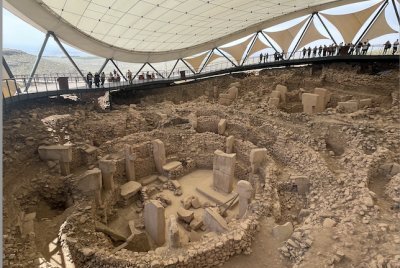
I visited Göbekli Tepe back in March 2025. As mentioned, you can take the bus from the stop outside the archeology museum. The archeology museum itself is a must-see; but you need to budget at least a couple hours for it. It's giant and covers a wide range of history in the region -- including, of course, Göbekli Tepe. Once you finish the museum, you can head outside for the bus, which leaves on the 45 of the hour (sharp, too, so don't get outside at 9:47 or you'll miss it!). The bus only takes contactless credit card or Urfa Kart, so don't bring cash. It's about 1 USD. If you're coming from the airport, the bus also stops on the hour at the Havas shuttle bus stop -- you come from the airport with the havas bus, and then wait here for the Göbekli Tepe bus. Ask the bus driver when they plan to leave to go back to the city after you arrive (google translate will come in handy here).
At Göbekli Tepe, you can easily spend an hour. There's a small museum (again, I would recommend the archeology museum over this one) that gives some context to the site and its importance. The rock carvings are easy to spot and you can circumnavigate them under the big tent. The only thing I wished for was more explanation on what I was seeing at times! I eavesdropped on a couple guided tours to better understand a …
Keep reading 0 comments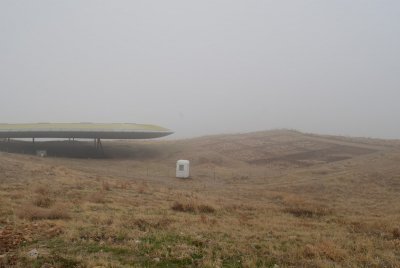
Göbekli Tepe, located on a hill east of Urfa, is considered one of the earliest sites of human worship and settlement. Excavations began in the 1960s and continue to this day with less than 10% excavated so far.
The initial assumption by the first archaeologist on site was that this was a temple for hunter-gatherers, not a permanent settlement. They would congregate in regular intervals here for worship and community. However, more recent excavations have uncovered evidence of permanent village life.
Like many prehistoric sites, Göbekli Tepe requires some imagination to fully appreciate. Personally, I found the site quite tangible given its age (>10.000 years). I also felt lucky to arrive on a foggy winter day as it added to the mythical aura of the place. Interestingly, it seems that the hill was considered sacred by locals till modern times.
The site’s facilities have been updated, with the main component now covered by a modern tent. They manage to strike a good balance between preserving the site’s holy spirit and protecting the remains from the elements. If a Maltese like Clyde compliments you on tents, you are doing something right; Malta with its Megalithic Temples being at the forefront of tents for world heritage sites.
While a shuttle bus is available to cover the 500m distance from the entrance to the site, I recommend walking. Following in our ancestors’ footsteps and taking in the views along the trail truly enhances the experience.
Getting There
…
Keep reading 0 comments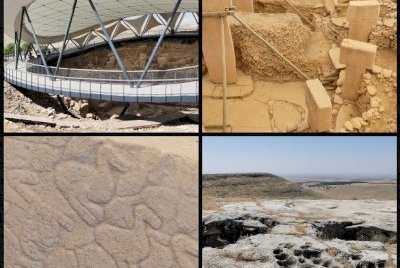
I visited Gobeklitepe in Spring 2021 after Nemrut Dagi WHS on the way to Sanliurfa TWHS. Gobeklitepe is the world's first known temple and notwithstanding its old age, the preserved T-shaped posts at the site are intricately decorated with figures of snakes, foxes, cranes, lions, bulls, boars, gazelles, bears, rams, spiders and scorpions.
Gobeklitepe is located about 22 kilometres from Sanliurfa, Harran and the Euphrates plateau. The Taurus Mountains and Karacadag Mountain not far from the Syrian border are visible too from here. Its geographical location together with the readily accessible nearbu stone quarries must have played a crucial role in the decision to build Gobeklitepe here. Gobeklitepe was discovered in 1963, however the true significance of the site was only realised as late as 1994, i.e. the transition from hunter-gatherer to food-producing communities, also known as the Neolithic Revolution.
I'm not a big fan of modern tents on ancient sites but the one at Gobeklitepe is one of the best worldwide and still allows some sunlight through. Nowadays, the only way to experience the T-shaped posts under a starry night sky (as had been first photographed by National Geographic for the first documentaries), is by viewing the audiovisual experience mainly geared to entertain children. After parking your vehicle, you can either walk for 5 minutes on a plain paved road or wait for a free shuttle bus to fill up. Since there was almost nobody around when we visited, we gladly walked the few metres in the …
Keep reading 0 comments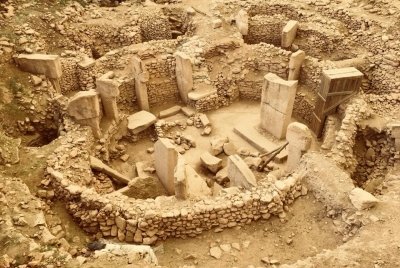
Visited April 2018. After one year and a half the site is open now to the public. The new visitors centre, ticket booth and a parking guard booth have been built (not without a controversy), as well as a road/path leading to the site itself which was covered with a some kind of roof. When I was there, no entry or parking fee was collected. The site is pretty small – just four circle temples one next to the other. You can walk around them and look from above – it won’t take more than one hour. Recently they started new research close by but not open to the public yet and won’t be open for a longer while. Probably you will meet Mahmut Yildiz, who “discovered” the temple 23 years ago together with his father. He was helping prof. Schmidt and now works there as a security guard. For now there is no local guide there who can explain you what you’re looking at. To better experience the site you should read Schmidt’s book and what videos available in internet (suggested by Solivagant). Or you can hire a guide from new Archaeology Museum in Sanliurfa – the visit to the museum is a must, because most artefacts found in Gobekli Tepe are displayed there; admit at least two hours to see museum exhibitions.
The site is very well signposted while coming from Sanliurfa (on Tentative list). No public transportation.
Keep reading 0 comments
The publication in 2001 by Prof Klaus Schmidt (KS) of a preliminary report of his excavations at Gobeklitepe following the site’s discovery in 1995 turned the archaeological theories about the Neolithic Age upside down. He dated the site at c11600ybp (6000 years before Stonehenge and 7000 before the Egyptian Pyramids) and concluded that “Based on the ostensible fact that only “wild” or non-domesticated plant remains and animal bones had been found – … it was constructed by hunter-gatherers who must have periodically come together for ritual reasons. (he) then suggest(ed) that ritual or religion spurred the domestication of plant-animals and caused the Neolithic Revolution” or, as KS more succinctly put it, “First came the temple and then the city”!
Gobekiltepe “consists of several sanctuaries in the form of round megalithic enclosures…….. The excavation has revealed no residential buildings. Göbekli Tepe seems to have been a regional centre where communities met to engage in complex rites. ..the general function of the enclosures remains mysterious; but it is clear that the pillar statues in the centre of these enclosures represented very powerful beings. If gods existed in the minds of Early Neolithic people, there is an overwhelming probability that the T-shape is the first known monumental depiction of gods.”
Such theories are not yet fully accepted and are being developed as digging takes place. KS died in July 2014 aged only 51 but the location continues to be a focus of World wide archaeological attention. Indeed …
Keep reading 0 comments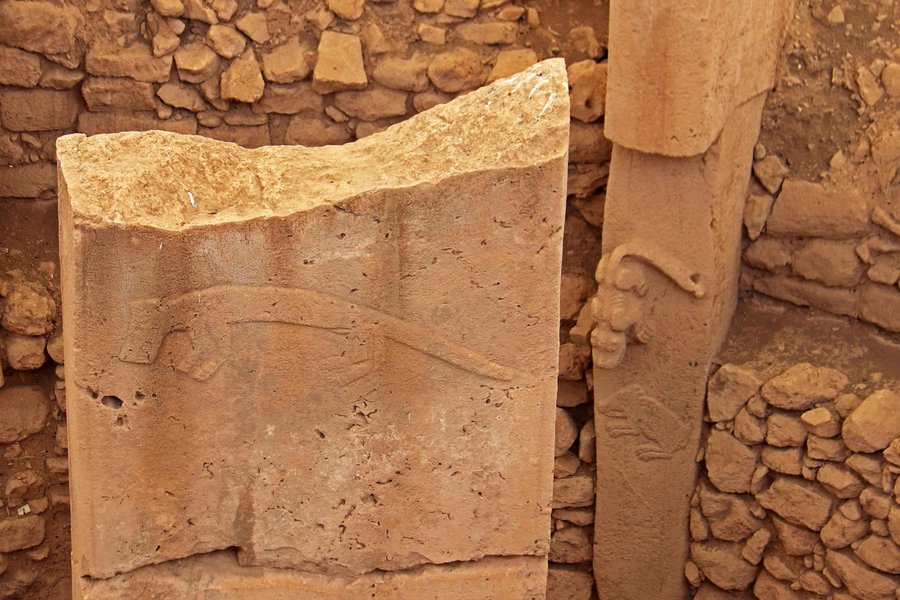
My wife Jan and I visited Gobeklitepe about five years ago. It was just at the end of the dig season so there weren't many people (or tourists) at the site. We were guided through and around the site by a young man who was very familiar with all that had gone on. Unfortunately he spoke no English so my Turkish had to suffice. Overall it is a spectacular site and one we would really like to revisit.
The museum in Urfa had a wonderful display of articles found at the site. I can only imagine the additions they have been able to make since our visit. I hope that our health will permit us to make another visit.
As with many of the other places we have visited in Turkiye we highly recommend it to our friends.
We flew to Urfa from Istanbul, an easy connection and a very enjoyable flight.
Keep reading 0 comments
